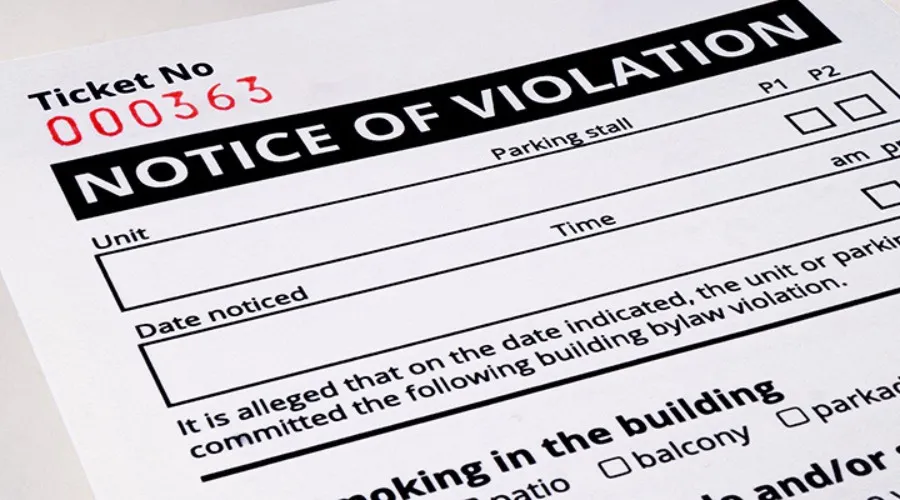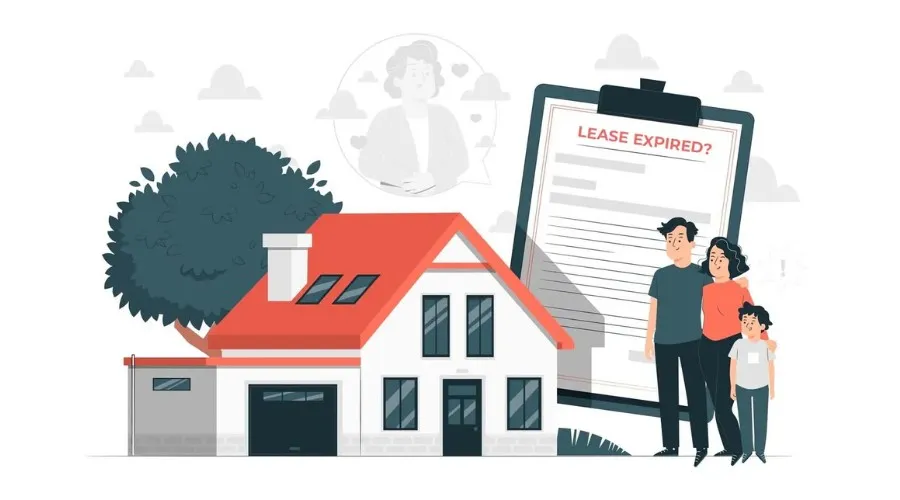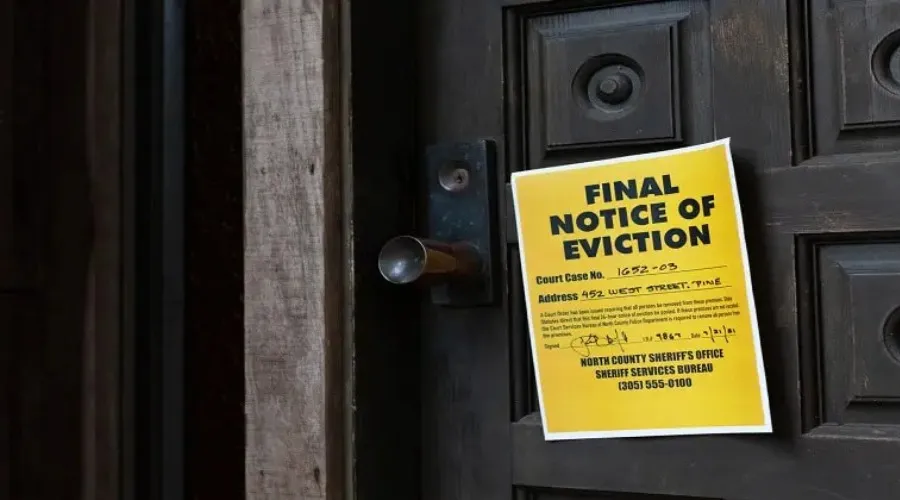The eviction process in Ohio requires landlords to follow strict legal procedures - from serving the proper notice to filing with the correct court. Skipping steps or mishandling notices can lead to delays, dismissed cases, or legal consequences. In this guide, LeaseRunner provides a clear and practical overview of how to handle evictions lawfully and efficiently, helping you protect your Landlord rights and avoid costly mistakes as a landlord in Ohio.
Ohio Eviction Law Updates: What's New for 2025
Ohio’s landlord-tenant laws continue to evolve in 2025, introducing new Tenant Protections and procedural requirements. Two major changes impact how landlords handle Court Procedure during evictions.
Protections against Strategic Lawsuits Against Public Participation (SLAPPs)
The Uniform Public Expression Protection Act prevents landlords from filing lawsuits to silence tenants reporting issues like code violations.
Effective Date: April 9, 2025
Applicable Law: Uniform Public Expression Protection Act (UPEPA)
Starting April 9, 2025, Ohio enacts the Uniform Public Expression Protection Act (UPEPA) to shield tenants from retaliatory lawsuits—commonly known as SLAPPs (Strategic Lawsuits Against Public Participation). These lawsuits are often filed by landlords to punish or intimidate tenants for exercising their legal rights, such as:
- Reporting building code violations
- Complaining about unsafe or unsanitary conditions
- Participating in tenant advocacy groups
- Speaking publicly or online about landlord misconduct
Key Provisions of UPEPA:
- Early dismissal motion: Tenants targeted by an SLAPP can file a special motion to dismiss the lawsuit early in the legal process.
- Automatic stay of proceedings: Once the motion is filed, all legal proceedings are paused until the court decides whether the case qualifies as an SLAPP.
- Expedited hearings: Courts must hold a prompt hearing—typically within 60 days—to determine the motion.
- Attorney’s fees: If the court finds the lawsuit retaliatory, the tenant may recover legal fees and court costs, discouraging abusive litigation tactics by landlords.
Purpose: This law is designed to protect tenants’ First Amendment rights and prevent landlords from using the court system as a weapon to suppress complaints or retaliate against lawful tenant actions. It promotes a fairer and more lawful eviction process in Ohio.
Stricter Penalties for Illegal Evictions in Ohio
As of 2025, Ohio has introduced tougher penalties for landlords who attempt to evict tenants using illegal or self-help methods. This legislative change is part of the state’s broader effort to reinforce tenant protections and uphold lawful eviction procedures.
Key Highlights:
- Increased fines: Landlords found guilty of illegal eviction practices—such as changing the locks, shutting off utilities, or removing tenant belongings without a court order—now face significantly higher civil penalties.
- Expanded Tenant remedies: Tenants may sue for damages and, in some cases, recover statutory damages, actual losses, and attorney’s fees.
- Stronger enforcement: Courts are now required to impose mandatory fines for violations, reducing judicial discretion in cases of clear unlawful eviction behavior.
Purpose: This law aims to deter landlords from bypassing the formal eviction process in Ohio, ensuring that tenants are treated fairly and lawfully under the state's landlord-tenant code. For a complete overview of landlord obligations and tenant rights, refer to the Ohio Eviction Laws guide from LeaseRunner.
Valid Legal Reasons for Eviction in Ohio
Ohio law outlines specific legal grounds for evicting tenants, governed by the Ohio Revised Code (ORC) Chapter 1923. Below are the valid reasons for eviction in 2025, their implications for landlords, and procedural requirements to avoid legal risks.
Non-payment of rent
Under Ohio landlord-tenant law, rent is typically considered overdue the day after its due date, unless the lease includes a grace period. If a tenant fails to pay on time, the landlord must serve a 3-Day Notice to Pay Rent or Vacate before proceeding with the eviction process.
If the tenant pays the full amount within those three days, the matter is resolved, and no eviction will be filed. However, if payment isn’t made, the landlord is within their legal rights to move forward with the eviction filing.
Lease violations
Both landlords and tenants are expected to uphold the terms outlined in the rental or lease agreement for the full duration of the tenancy. If a tenant breaks any part of that agreement, the landlord may issue a 3-Day Notice to Vacate.
Common lease violations in Ohio may include:
- Causing property damage
- Smoking in units designated as non-smoking
- Keeping unauthorized pets in a no-pet property
To minimize risk, always use a clearly written rental contract. LeaseRunner offers state-specific lease agreement templates to help Ohio landlords stay compliant with the law.

Illegal or criminal activity
If a tenant is found engaging in unlawful behavior on the premises, the landlord has the right to serve a 3-Day Notice to Vacate immediately. This applies even if the illegal acts were committed by a guest or another occupant living with the tenant.
Unlawful acts include, but are not limited to:
- Drug trafficking or manufacturing
- Assault, theft, or violent behavior
- Registered sex offenders living within 1,000 feet of a school or daycare
- Homicide or other serious criminal offenses
Landlords should document any such incidents carefully and may contact law enforcement if necessary. Ohio eviction laws support prompt action in these cases to protect community safety.
Health & safety violations
Tenants who violate health, building, or safety codes may face eviction if they don’t take corrective action. In such cases, the landlord must provide a 30-Day Notice to Comply, giving the tenant time to fix the issue.
Examples of material violations include:
- Accumulation of trash attracts pests or vermin
- Damaging plumbing or electrical systems
- Unsafe or unsanitary living conditions
If the tenant fails to resolve the issue within 30 days, the landlord may initiate the eviction process in Ohio courts.
Staying after lease ends
In Ohio, landlords cannot evict tenants without a valid reason during the lease term. However, suppose the lease has expired and the tenant remains on the property without signing a new agreement. In that case, the landlord may issue either a 7-Day or 30-Day Notice to Vacate, depending on the rental type (weekly or monthly).
It’s important to note that landlords must still follow proper legal procedures-even if the lease has ended. A written eviction notice is always required.

Squatters & adverse possession
Squatters, or unauthorized occupants, can be evicted as they lack any legal right to occupy the property (ORC 1923.02(A)(4)). The landlord must serve a 3-day notice to vacate and may need to prove ownership in court. For a deeper look at the legal rights of squatters in Ohio and how adverse possession laws may apply, see Ohio squatter rights.
Adverse possession, where someone claims legal ownership after occupying the property for 21 years under specific conditions (ORC 2305.04), is rare in eviction cases and typically not a valid defense for squatters. Eviction proceedings focus on removing the squatter, not resolving ownership disputes.
Serving Eviction Notices in Ohio
Serving an eviction notice is the first official step in Ohio’s legal eviction process. To avoid delays or dismissal in court, landlords must follow specific rules about the type of notice, what it must include, and how it’s delivered.
Proper service ensures the process moves forward legally. For extra assurance, you can use a tool like LeaseRunner’s eviction screening service to check a tenant’s eviction history before leasing.
Notice types & requirements
Ohio law requires landlords to serve specific notices based on the reason for eviction, with defined timeframes, as outlined in the Ohio Revised Code Chapter 1923.
- 3-Day notice to pay or quit: For non-payment of rent, the landlord must give the tenant three days to pay the overdue rent or vacate (ORC 1923.04(A)). The notice period starts the day after service.
- 3-Day notice to remedy or quit: For lease violations (e.g., unauthorized pets or property damage), the tenant gets three days to correct the violation or leave (ORC 1923.04(A)). Some serious violations may not allow a remedy option.
- 3-Day notice to vacate: For illegal activities (e.g., drug-related crimes) or squatters, tenants must vacate within three days without a chance to remedy (ORC 1923.02(A)(6), ORC 1923.04(A)).
- 30-Day notice to terminate tenancy: For month-to-month tenancies, landlords must provide a 30-day notice to end the tenancy before issuing a 3-day eviction notice if the tenant remains (ORC 5321.17(B)).
- 7-Day notice for week-to-week tenancies: For week-to-week tenancies, a 7-day notice is required to terminate the tenancy (ORC 5321.17(A)).
Required notice content
A legally valid eviction notice in Ohio must include:
- The tenant’s full name and property address
- A clear explanation of the reason for the notice
- The amount of time the tenant has to vacate or fix the issue
- Landlord contact information
- Ohio law requires that all eviction notices include the following mandatory legal statement: “You are being asked to leave the premises. If you do not leave, an eviction action may be initiated against you. If you are in doubt regarding your legal rights and obligations as a tenant, it is recommended that you seek legal assistance.” This requirement is mandated by Ohio Revised Code § 1923.04.
Leaving out key details may result in your notice being rejected by the court.
Proper delivery methods
Ohio law specifies acceptable methods for serving eviction notices (ORC 1923.04):
- Personal delivery: Handing the notice directly to the tenant.
- Posting on the property: Attaching the notice to the main entrance of the rental unit (e.g., the front door) in a conspicuous manner.
- Certified mail: Send the notice via certified mail with a return receipt requested.
- Leaving with a person of suitable age: Delivering the notice to an adult at the tenant’s residence who can reasonably be expected to deliver it to the tenant.
The landlord should document the delivery method (e.g., with a photo of the posted notice or certified mail receipt) to prove proper service in court. Service is considered complete on the date of delivery or posting, not when the tenant receives it.

Avoiding common mistakes
Landlords must avoid actions that could invalidate the eviction or lead to legal liability:
- No Self-help evictions: Landlords cannot forcibly remove tenants by changing locks, shutting off utilities, or removing belongings (ORC 5321.15). Only a court-ordered eviction with sheriff assistance is legal. Self-help evictions can result in lawsuits for damages.
- Proper notice timing: Failing to provide the full notice period (e.g., filing eviction before the 3-day period expires) can lead to case dismissal.
- Incomplete notices: Omitting required content (e.g., specific violation details or statutory language) may render the notice invalid.
- Improper delivery: Serving notices via unapproved methods (e.g., email or text, unless agreed in the lease) can be challenged in court.
- Retaliatory evictions: Evicting a tenant for exercising legal rights (e.g., reporting code violations) is prohibited and can lead to penalties (ORC 5321.02).
- Discrimination: Evictions based on protected characteristics (e.g., race, religion, or disability) violate federal and Ohio fair housing laws.
Step-by-Step Eviction Process in Ohio
If you're a landlord in Ohio, understanding the legal steps to evict a tenant is key to protecting your property and staying compliant. This guide walks you through the eviction process in Ohio, based on current landlord-tenant laws.
Step 1 – Serve the proper notice
Before heading to court, landlords must first issue the appropriate notice to the tenant. The type of notice depends on the situation:
- For nonpayment of rent, a 3-day notice to vacate is required.
- For lease violations or holdover tenants, different notice periods may apply.
The notice must include the tenant’s name, property address, reason for eviction, timeframe to comply, and the landlord’s intent to pursue eviction. It must be served via personal delivery, posting on the property, certified mail, or leaving with a suitable person (ORC 1923.04). The 3-day period begins the day after service, excluding weekends and holidays for filing purposes.
Step 2 – File forcible entry & detainer complaint
After serving the tenant with the proper eviction notice and allowing the legally required time to pass, Ohio landlords can proceed by filing a forcible entry and detainer complaint at the local court.
This involves submitting the correct paperwork and paying a filing fee. Depending on the type of violation and lease terms, the complaint can typically be filed 3 to 30 days after the notice is given.
Step 3 – Serve court papers
The court issues a summons, which must be served on the tenant at least 7 days before the hearing (ORC 1923.06). Service is typically handled by:
- Court Bailiff or Sheriff: Delivering the summons to the tenant or posting it on the property.
- Certified Mail: Sent by the court or the landlord’s attorney.
- Process Server: A third party authorized to serve legal documents.
The summons notifies the tenant of the hearing date, time, and location, and their right to respond. Proof of service must be filed with the court to proceed.
Step 4 – Tenant response time
The tenant has the right to respond to the complaint before the hearing, typically within 7 days of receiving the summons (ORC 1923.06). They may:
- File a written answer, admitting or denying the landlord’s claims.
- Raise defenses, such as improper notice, retaliation (ORC 5321.02), or payment of disputed rent into escrow.
- Request a continuance if they need more time to prepare.
If the tenant does not respond or appear, the landlord may request a default judgment. However, tenants can contest the eviction at the hearing even without a formal response.
Step 5 – Attend court hearing or obtain default judgment
At the hearing, both parties present their case before a judge or magistrate (ORC 1923.09):
- The landlord provides evidence, such as the lease, notice served, and proof of non-compliance (e.g., unpaid rent records).
- The tenant may present defenses, such as improper notice, habitability issues, or discrimination.
- The judge issues a ruling, typically within a few days, granting or denying the eviction.
If the tenant fails to appear, the landlord can request a default judgment, which grants the eviction without a full hearing, provided the landlord proves proper notice and grounds.
Step 6 – Request writ of restitution
If the court rules in the landlord’s favor, the landlord requests a writ of restitution (ORC 1923.13), which authorizes the sheriff or bailiff to remove the tenant. The landlord files the request with the court, paying a fee (typically $50-$100).
The court issues the writ, usually within 1-3 days, instructing the sheriff to execute it within 10 days (ORC 1923.14). The tenant is given a final notice (often 1-7 days) to vacate before the sheriff enforces the eviction.
Step 7 – Regain possession
If the tenant doesn’t appeal, the court will issue a Writ of Execution within a few hours to a few days. This gives the tenant up to 10 days to move out-typically 5–7 days, depending on the case.
Only a sheriff or court officer can carry out the eviction. Once the writ is delivered or posted, the tenant must vacate. The actual timeline depends on the officer’s availability, not the full 10 days.
Ohio law doesn’t clearly define how to handle abandoned property. Landlords should try to contact the tenant and allow a reasonable time before discarding or selling items to cover unpaid rent or damages.
Note: Most tenants must vacate within a few days to 10 days after the court’s decision.
Want to know how Ohio law handles unauthorized occupants? Learn about Ohio Squatter Rights and whether squatters can legally claim your property.
Eviction Timeline & Cost in Ohio for Landlords
The eviction process in Ohio, per Ohio Revised Code (ORC) Chapter 1923, involves specific steps with associated timelines and costs for landlords. Below is a concise table summarizing each step, with costs and durations that are approximate, varying by county and case complexity.
Documentation & evidence for smooth eviction process in Ohio
To legally evict a tenant in Ohio, landlords must have strong documentation to back up their claims. Clear, well-organized records can make or break your case in court. Here's what you need to keep on file during the eviction process in Ohio.
Keep important records
Maintaining organized records is essential for a legally sound eviction process (ORC 1923.02, 1923.04):
- Lease Agreement: Retain a signed copy with rental terms.
- Notices Served: Keep copies of eviction notices (e.g., 3-day, 30-day) and proof of delivery (certified mail receipt, photo).
- Correspondence: Save emails, letters, or texts with the tenant about disputes.
- Proof of Ownership: Maintain deed or title to confirm eviction authority.

Proof of payment issues
For non-payment of rent evictions (ORC 1923.02(A)(9)), collect evidence to prove the tenant’s failure to pay:
- Rent Ledger: Record due dates, payments, and outstanding balances.
- Payment Receipts: Keep bank statements or returned checks showing non-payment.
- Late Notices: Retain copies of reminders sent before the eviction notice.
- 3-Day Notice: Save the pay-or-quit notice and proof of delivery.
Lease violation or illegal activity evidence
For evictions due to lease violations or illegal activity (ORC 1923.02(A)(6), (8)), gather specific evidence:
- Photos/Videos of Violations: Document unauthorized pets, damage, or unapproved occupants.
- Police Reports: Collect reports of illegal activity (e.g., drug-related incidents).
- Witness Statements: Retain neighbor accounts of lease violations.
- 3-Day Notice: Keep the violation or vacate notice and proof of delivery.
Property condition documentation
For evictions related to health, safety, or property damage issues, document the property’s condition:
- Move-In/Move-Out Inspections: Save photos or checklists comparing property conditions.
- Damage Photos: Document tenant-caused damage or unsanitary conditions.
- Inspection Reports: Obtain health or code violation reports from authorities.
- 3-Day Notice: Retain the remedy-or-quit notice and proof of delivery.
5 Tips To Avoid Eviction Mistakes
Avoid common eviction mistakes by following Ohio landlord-tenant laws carefully. Here's what you need to know before starting the process.
1. Serve the right notice, the right way
Under Ohio eviction law, landlords must give tenants proper written notice before filing an eviction. For non-payment of rent, a 3-day notice to pay or quit is required. For lease violations, a 3-day notice to comply or vacate must be served. Make sure the notice is delivered legally-by hand, posted on the door, or via certified mail—to avoid court delays or dismissal.
2. Know the legal reasons for eviction
Evictions in Ohio must be based on valid grounds, such as nonpayment of rent, lease violations, or criminal activity on the property. You cannot evict a tenant for retaliatory or discriminatory reasons. Doing so may lead to legal penalties. Always ensure your reason aligns with Ohio Revised Code 5321.
3. File properly in the right court
Eviction cases must be filed in the municipal or county court where the rental property is located. Be sure to complete all paperwork accurately—including the complaint, summons, and property address. Mistakes in filing can delay your case or get it dismissed entirely.
4. Never attempt a “self-help” eviction
It is illegal in Ohio to change the locks, shut off utilities, or remove a tenant’s belongings to force them out. These self-help eviction methods can lead to lawsuits and fines. Always go through the formal eviction process with the court.
5. Keep strong documentation
Maintain organized records of lease agreements, payment history, communications, and notices sent. Courts rely on documented proof to evaluate eviction cases. Having clear evidence of violations or unpaid rent will strengthen your case if the tenant challenges it.
Conclusion
The eviction process in Ohio requires landlords to follow a strict legal sequence - from serving proper notices to filing in the correct court. Skipping steps can result in delays or a dismissed case. To avoid costly mistakes and stay legally compliant, rely on trusted resources like LeaseRunner’s Ohio eviction law guide.
To stay updated with Ohio-specific landlord rules and notices, visit LeaseRunner's Ohio landlord law page for state-compliant forms, notices, and legal updates.
FAQs
Q1. How long does the eviction process take in Ohio?
The eviction timeline in Ohio typically ranges from 3 to 6 weeks, depending on court availability and whether the tenant contests the eviction.
Q2. Do landlords need a reason to evict a tenant in Ohio?
Yes. Under Ohio law, landlords must have a legal reason - such as nonpayment of rent, lease violations, or illegal activity - to initiate an eviction.
Q3. Can a landlord evict a tenant without going to court in Ohio?
No. Self-help evictions, like changing locks or removing a tenant’s belongings without a court order, are illegal in Ohio. All evictions must go through the formal court process.



